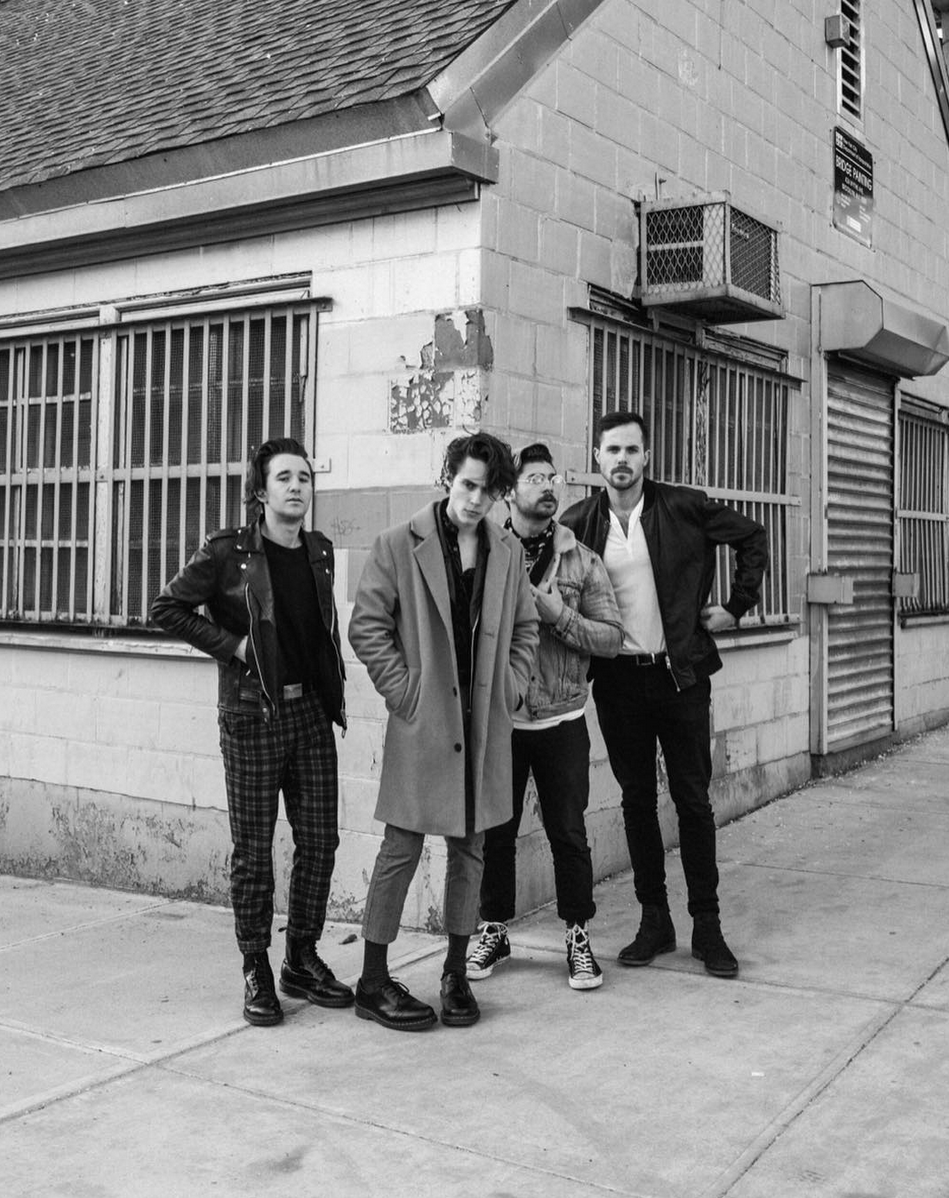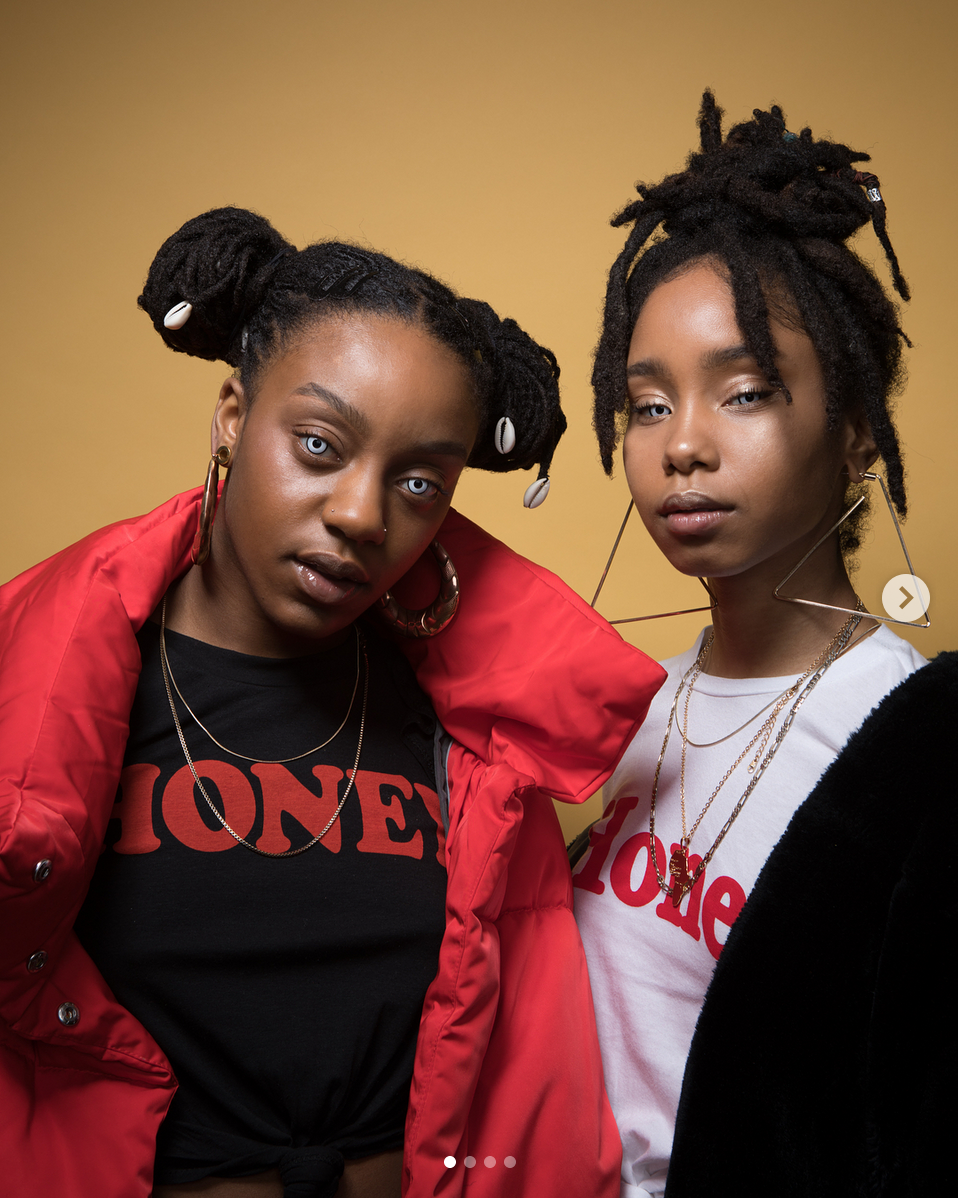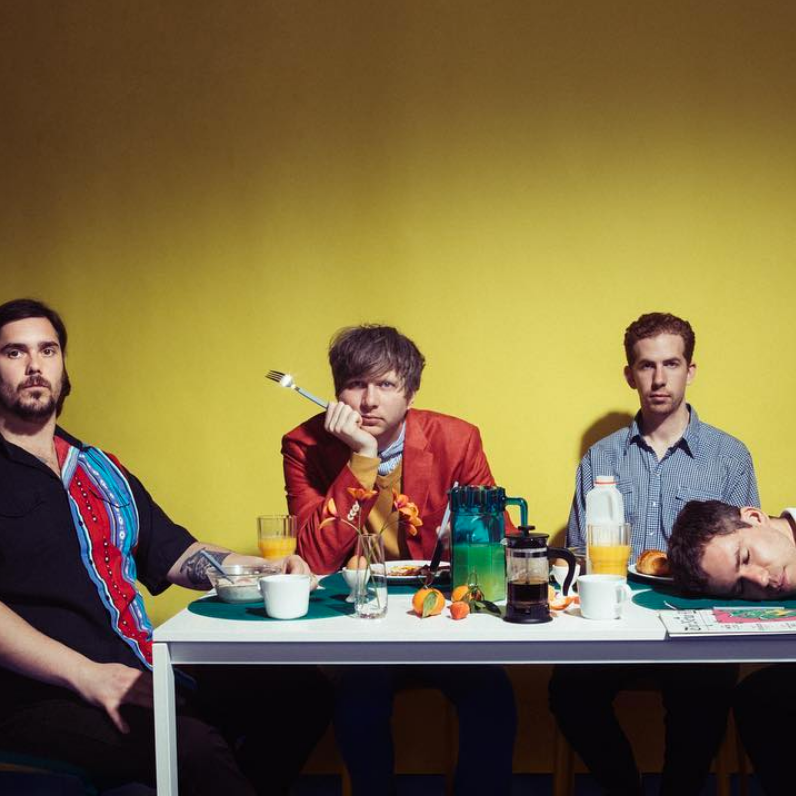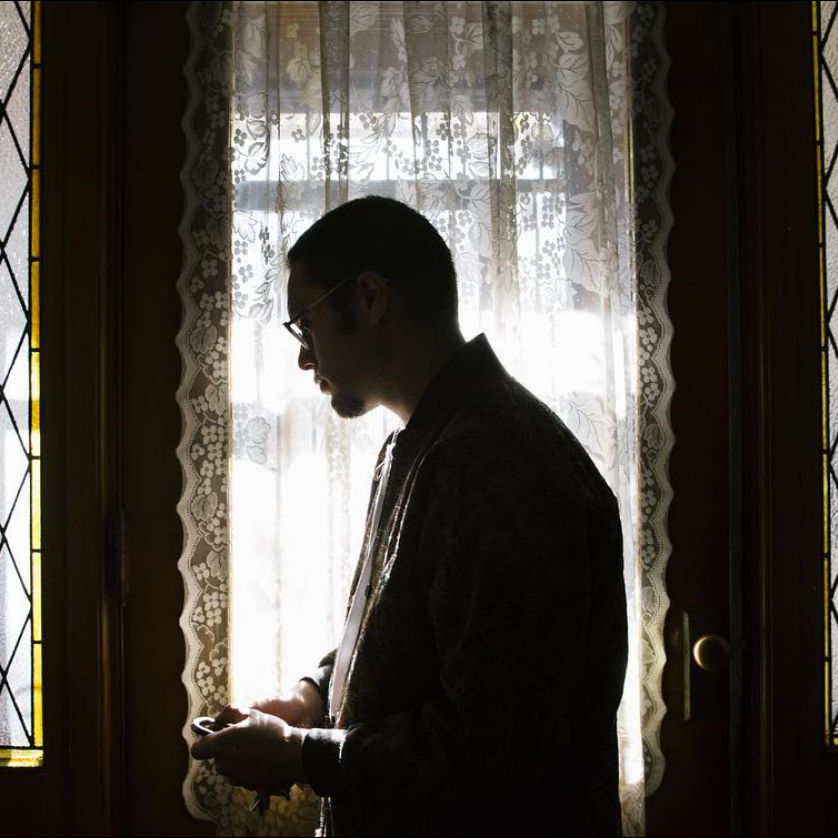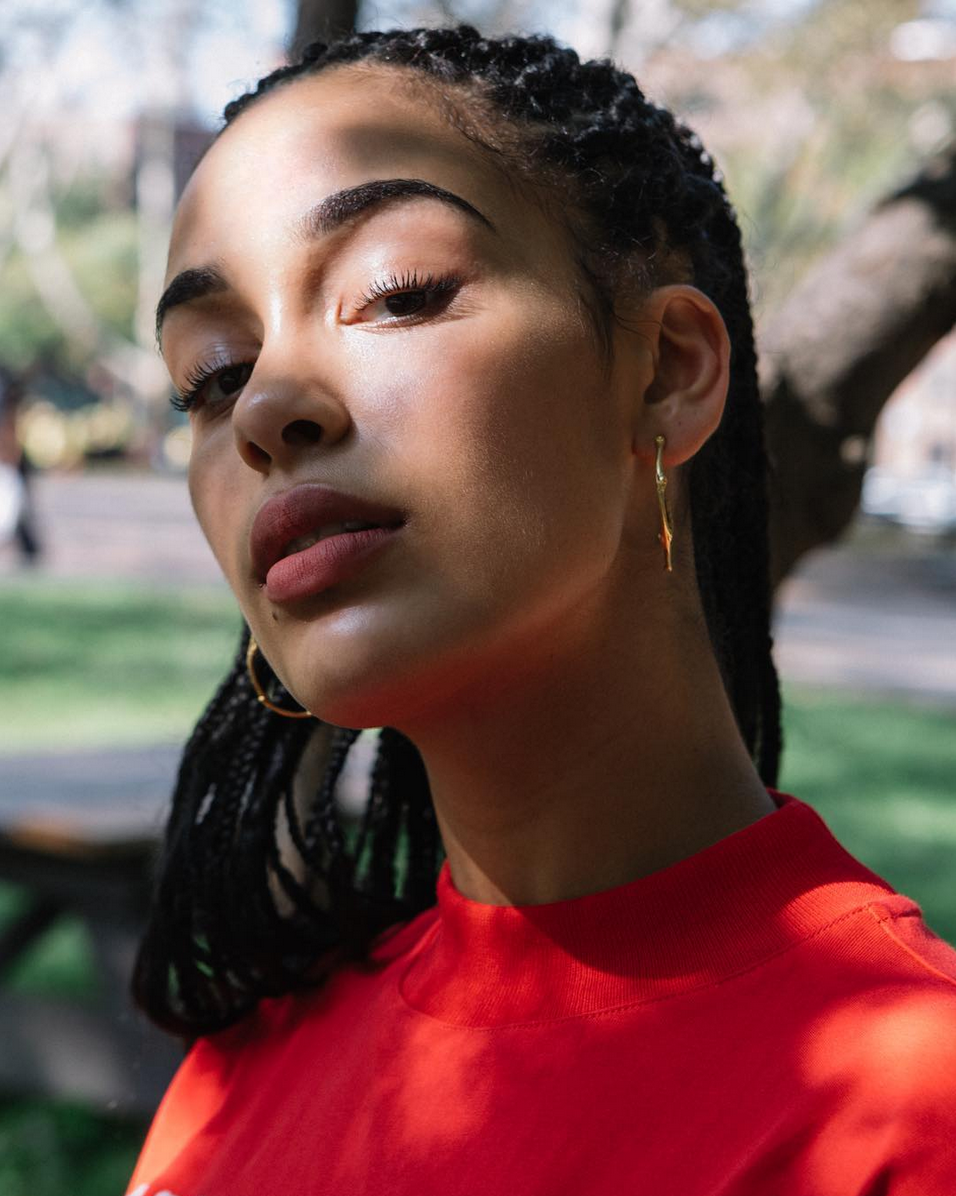A series devoted to photographers working within music.
The modern musician portrait has become nearly synonymous with the work of Ebru Yildiz. The New York-via-Turkey based photographer has illuminated an array of faces including Perfume Genius, Pussy Riot, St. Vincent, and Solange. It's no surprise, because few capture an artist the way Yildiz does. Her photos have the kind of starkness that stops you in your tracks, balancing stillness with pulsing energy. Maybe part of that style stems from Yildiz's early days taking photos at DIY shows around New York in the kind of rooms that are cluttered and abrupt, lit with a raw intimacy between artists and audience. In her portraits, Yildiz manages to hone a similar tension while simultaneously unlocking something angelic and loose in her subjects. It’s nearly palpable.
Laurie Anderson, Ebru Yildiz
I'd love to start by discussing your background. You grew up in Turkey and moved to NYC to study at Pratt, and eventually immersed yourself in the Brooklyn music community. What were some of the early shows that piqued your interest?
When I first moved to New York in 1998, I didn't even know where the live shows were happening. It took me a while to figure out, it was kind of “who you know.” I started going to good shows, as in local indie bands and not arena bands, four or five years later. In 2003 I started taking photos. One of the first local bands I photographed was A Place To Bury Strangers. It was in a really small room and nobody was there. They started playing and it was so good. I tried to take photos and some of them turned out really good. Another important one was The Kills show, they were playing in The Bowery Ballroom. They're amazing live. It made me realize what kind of emotions I'm looking for in photos.
Vagabon - Lost In A Dream
There's such a serene quality to your work, people's eyes look so wide and up close. Are there shortcuts to get to that intimate space, or is each artist different?
The thing about musicians is 99 percent of them don't want to be photographed, it's just something they have to do, something they don't necessary enjoy. I feel guilty that I take pleasure taking photos so much while the other person is kind of suffering (laughs). I try to make it feel like a hangout more than a formal portrait. I'll do research if I don't know the person, I'll see what they're up to and try to ask them questions, kind of like an interview. I think it makes people feel a little relaxed when they see you put time and effort into trying to know them.
John Cale, Ebru Yildiz
“The thing about musicians is 99 percent of them don’t want to be photographed”
Joey Badass, Ebru Yildiz
London In Stereo, Ebru Yildiz
Cigarettes After Sex, Ebru Yildiz
In 2015 you received a grant to work on an in-depth photo essay on Turkish music. Have you maintained a connection to the music scene there, like Erkin Koray whom you photographed, or did you feel like you were exploring that musical landscape for the first time?
To make a super long story short, when I was growing up it wasn't cool to listen to Turkish music, so I never was into it. When I moved here and started moving around in the music scene, people started asking me, “oh you know that Erkin Koray?” I was feeling embarrassed because it was kind of like not knowing your capital city or something. It's important. So I went back to listen and tried to make up for it. It made me realize there are so many different styles of music. The whole project started with psychedelic rock since that's big in Turkey, but then I added different genres as well, still kind of related to indie rock. It was very informative for me, and really nice to see what was going on.
You mentioned always being nervous before a photoshoot. Is that something that's eased up over the years, or remains as strong as day one?
I think there was a reason I started with live photos which give you a safe distance from the person: you don't have to talk with them or direct them. I've been taking portraits for 14 years now, and every shoot, regardless of who it is—it could be someone super famous or someone nobody knows—I get so worked up and nervous. It doesn't necessarily come from a place of insecurity. I love what I do, so I want to push myself to do more or better. Each person you meet is a different dynamic, it's a really intimate thing to be face-to-face with someone. You don't know how something is going to turn out. So I'm so nervous before every shoot, to the point I can't sleep the night before. It kind of keeps me on my toes.
Mac Demarco, Ebru Yildiz
You recently did a book of photos for Zola Jesus that paired with her record, Okovi. The idea was yours initially. What sparked that?
There used to be this magazine called Life, I used to look at back in Turkey. They had gorgeous photo essays. More time and effort put into it. I really wanted to work on longer projects. The first one was with Zola Jesus. After I made the photos, I was like “wow this would make a really good book.” Her visual aesthetic is really parallel to mine, it's part her but also part my type of photos. Just yesterday I started working on the second one with this band called Iceage. I love them. I want it to be something with artists and musicians I have an emotional connection to.
Is it hard to merge your visual aesthetic with that of other artists?
That's what I was going to say. I personally enjoy having a little darkness to my photos, either emotionally or visually, but that wouldn't fit every musician. When I'm working with other people, it doesn't necessarily have to be 100 percent my taste, but a combination, meeting in the middle in a way.
“I’m so nervous before every shoot, to the point I can’t sleep the night before. It kind of keeps me on my toes.”
David Byrne, Ebru Yildiz
Iron And Wine, Ebru Yildiz
In 2016 you released We've Come So Far - The Last Days of Death by Audio. Which chronicled the last days of the DIY space in Williamsburg. You spent the last 75 days taking photos there everyday. Did you go into the experience knowing how you wanted to frame those shots, or did it unfold by going in and out everyday?
The reason why that place was so important to me was because of the lead singer of A Place To Bury Strangers. It was actually his space. So when I first started taking photos, that's when they moved into that space. I was hanging out there at the very beginning when they were just doing shows here and there. That was my first home after I moved to New York where I felt like I wasn't the only weird person. It was emotional for me overall.
I didn't think I was going to do a book, I just wanted to document it because it was so important for me, and the music community in general, because they gave musicians a lot of first New York shows. For out-of-towners it's hard to get shows in New York, but this place was kind of a hub for touring bands to come and play. When I went in, I just started documenting, and then a couple weeks into it, I was like, this has to be a book.
Do you still feel connected to the Brooklyn music community?
I used to be more, I used to go to a lot more shows. But now I'm doing more portraits. I still go to shows at DIY venues, but not as much. There's a whole new generation of people. What I'm saying is I got older so I don't know the super young bands anymore (laughs), but I try to keep up.












